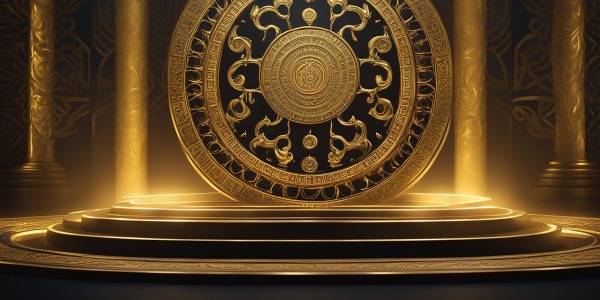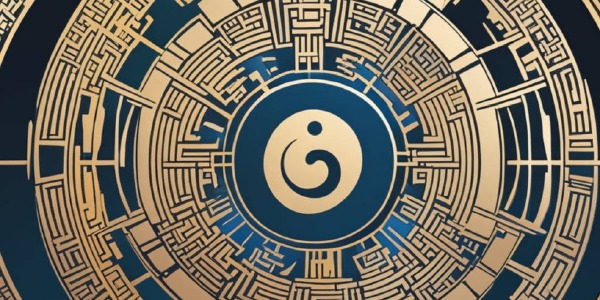The Profound World of Mandalas: Exploring Symbolism, History, and Uses
Introduction
Mandalas have captivated the human mind for centuries, representing a powerful union of spirituality, culture, and psychology. Originating from ancient Sanskrit texts, these intricate geometric designs have transcended boundaries and gained popularity as tools for meditation, self-realization, and inner exploration. In this blog post, we will dive deep into the historical significance, symbolic meaning, artistic design, and various uses of mandalas, revealing the profound impact they have on individuals around the world.
Historical Significance
The very term “mandala” finds its roots in Sanskrit, where it translates to “circle”. As a symbol of higher thought and deeper meaning, mandalas have held a significant place in human history.
Hinduism
Tracing mandalas back to ancient Hindu texts like the Rig Veda, we glimpse their purpose as tools for reflection on the essence of life and existence. In Hinduism, these sacred circles represent the universe itself, reflecting the interconnectedness of all beings.
Buddhism
Mandalas play a crucial role in Buddhist traditions as well, embodying the universe in a microcosm. Tibetan sand mandalas, meticulously crafted out of colored sand, serve as aids for meditation, enlightenment, and understanding the true nature of reality. Through their creation and dissolution, practitioners learn to embrace impermanence and detach from earthly attachments.
Jainism
Jainism, another ancient Indian tradition, also holds mandalas in high regard. Encouraging meditation, self-realization, and reflection on Jain teachings, mandalas provide a path to connect with the self and attain spiritual growth.
Symbolic Meaning
Because they are rich with symbolism, mandalas can be appreciated across cultures and traditions. Their aesthetic appeal and intricate patterns are captivating, but their deeper meaning is what makes them truly special. As you explore the different types of mandala, consider how each one relates to your life. Shaped like a circle, mandalas are often associated with the sun and the universe. They also represent wholeness, unity, balance, and harmony.
Spiritual Connection
Mandalas are often regarded as sacred maps, serving as pathways to connect with the divine, higher self, or spiritual realm. By contemplating and meditating on these intricate patterns, individuals can embark on a journey towards self-discovery and a deeper connection to the cosmos.
Balance and Harmony
The circular nature of mandalas evokes a sense of unity and balance. Representing the interconnectedness of all beings and the cyclical nature of life, they inspire a profound understanding of harmony and the ever-changing rhythms of existence.
Inner Exploration
The symmetrical patterns within mandalas guide individuals on a voyage of inner exploration. By delving into their consciousness, individuals can access the deep realms of emotions, thoughts, and the subconscious. Mandalas become mirrors through which individuals encounter their innermost selves.
Self-Realization
Through contemplation and meditation on mandalas, individuals aim to gain insights, self-awareness, and a deeper understanding of their own existence. The journey with mandalas, guided by their complex and precise designs, leads to moments of self-realization and the unearthing of one’s true nature.
Artistic Design
The artistic beauty of mandalas captivates the eye and nourishes the soul. From intricate patterns to color symbolism, their design holds profound significance.
Intricate Patterns
Mandalas are characterized by intricate and symmetrical patterns, often incorporating geometric shapes, symbols, and elements from nature. Each line and curve is meticulously crafted, representing the interconnectedness of all things and the unity that underlies the world.
Color Symbolism
The choice and arrangement of colors within mandalas carry profound meaning. Different colors may represent emotions, elements, or stages of spiritual growth. Vibrant hues ignite passion and energy, while muted tones evoke tranquility and peace.
Sacred Geometry
Guided by sacred geometry, mandalas incorporate shapes like circles, squares, triangles, and spirals. These shapes hold symbolic meanings in various traditions, representing universal forces, cosmic energy, and the harmony found in nature.
Uses and Applications
Mandalas are powerful tools for personal growth, spiritual connection and artistic expression. They can be used in many different settings.
Meditation and Mindfulness
As a focal point for meditation, mandalas guide individuals into a state of calm, focus, and heightened self-awareness. By immersing oneself in the intricate design, the mind finds stillness, and a profound sense of peace emerges.
Therapy and Healing
In the realm of art therapy, mandalas play a therapeutic role. Through their creation and interpretation, emotional healing and self-expression find solace. Engaging with mandalas allows individuals to explore their innermost emotions and find comfort in the creative process.
Personal Growth and Reflection
Mandalas serve as gateways to self-discovery, providing a space for introspection and self-reflection. By contemplating the intricate patterns and symbols, individuals gain clarity on personal goals, aspirations, and the path towards personal growth.
Decorative and Cultural Expressions
Mandalas have transcended their spiritual and psychological significance to become decorative expressions in various art forms, architecture, and religious rituals. They represent cultural aesthetics and beliefs, revealing the rich tapestry of human creativity.
Conclusion
The world of mandalas is a realm of profound symbolism, rich history, and limitless applications. From their origins in ancient texts to their use as tools for personal and spiritual growth, mandalas continue to inspire individuals on their inner journeys. They foster self-discovery, mindfulness, and a deep connection to the spiritual realms. Whether used for meditation, therapy, or as ornamental expressions, mandalas remain powerful tools that hold profound meaning for those who engage with them. Embrace the sacred circles, delve into their intricate patterns, and discover the transformative power of the mandala.



